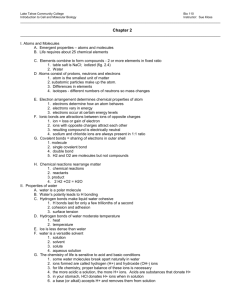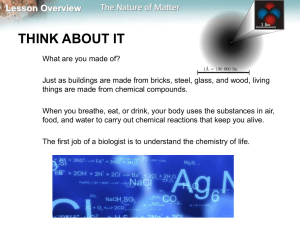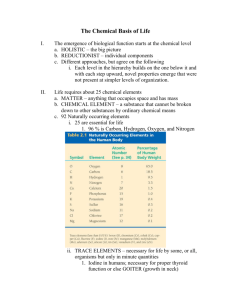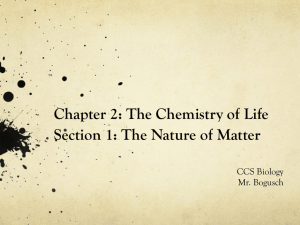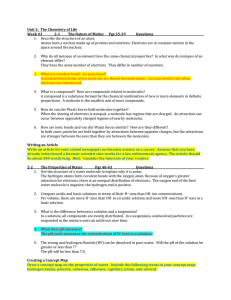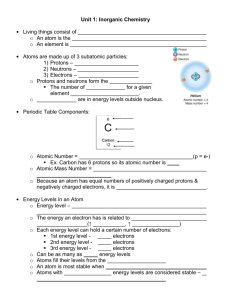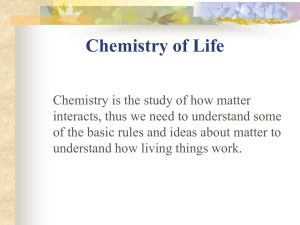Ch. 2 - word - Ltcconline.net
advertisement
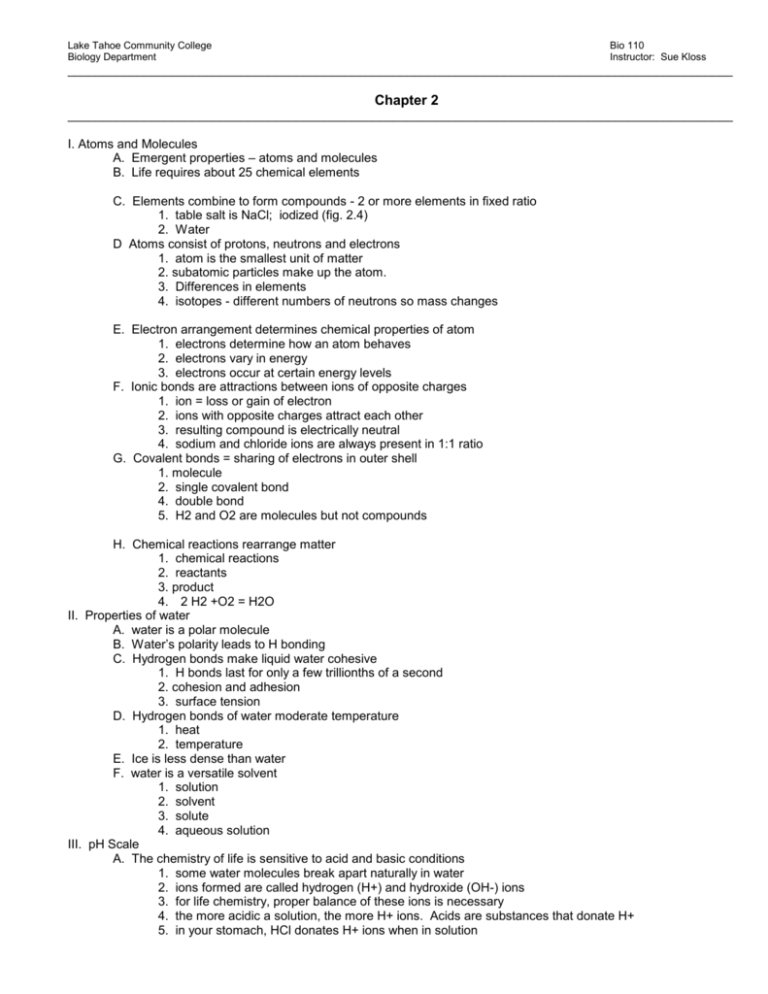
Lake Tahoe Community College Biology Department Bio 110 Instructor: Sue Kloss ________________________________________________________________________________________________ Chapter 2 ________________________________________________________________________________________________ I. Atoms and Molecules A. Emergent properties – atoms and molecules B. Life requires about 25 chemical elements C. Elements combine to form compounds - 2 or more elements in fixed ratio 1. table salt is NaCl; iodized (fig. 2.4) 2. Water D Atoms consist of protons, neutrons and electrons 1. atom is the smallest unit of matter 2. subatomic particles make up the atom. 3. Differences in elements 4. isotopes - different numbers of neutrons so mass changes E. Electron arrangement determines chemical properties of atom 1. electrons determine how an atom behaves 2. electrons vary in energy 3. electrons occur at certain energy levels F. Ionic bonds are attractions between ions of opposite charges 1. ion = loss or gain of electron 2. ions with opposite charges attract each other 3. resulting compound is electrically neutral 4. sodium and chloride ions are always present in 1:1 ratio G. Covalent bonds = sharing of electrons in outer shell 1. molecule 2. single covalent bond 4. double bond 5. H2 and O2 are molecules but not compounds H. Chemical reactions rearrange matter 1. chemical reactions 2. reactants 3. product 4. 2 H2 +O2 = H2O II. Properties of water A. water is a polar molecule B. Water’s polarity leads to H bonding C. Hydrogen bonds make liquid water cohesive 1. H bonds last for only a few trillionths of a second 2. cohesion and adhesion 3. surface tension D. Hydrogen bonds of water moderate temperature 1. heat 2. temperature E. Ice is less dense than water F. water is a versatile solvent 1. solution 2. solvent 3. solute 4. aqueous solution III. pH Scale A. The chemistry of life is sensitive to acid and basic conditions 1. some water molecules break apart naturally in water 2. ions formed are called hydrogen (H+) and hydroxide (OH-) ions 3. for life chemistry, proper balance of these ions is necessary 4. the more acidic a solution, the more H+ ions. Acids are substances that donate H+ 5. in your stomach, HCl donates H+ ions when in solution 6. a base (or alkali) accepts H+ and removes them from solution Ch 2 - Homework/objectives 1. List and give an example of the levels of biological organization beginning with an ecosystem and ending with atoms 2. Distinguish between matter, chemical elements and compounds. Give examples of each. 3. Describe the relative size, location, and electrical charge of protons, neutrons, and electrons within an atom. Explain how the atomic number and mass number are determined. Explain how atoms of each element are identified. 4. Define an isotope and explain how isotopes are used in biological research and medicine. 5. Distinguish between ionic and covalent bonds. 6. Write the chemical formula for the creation of water from hydrogen and oxygen. Identify reactants and products. 7. Describe the structure of water, explain how this shape makes water a polar molecule. 8. Describe 4 life supporting properties of water, and give an example of how each property affects some form of life. 9. Distinguish between the chemical properties of acids, bases, and neutral solutions. Explain how buffers stabilize the pH of acid and basic solutions.

